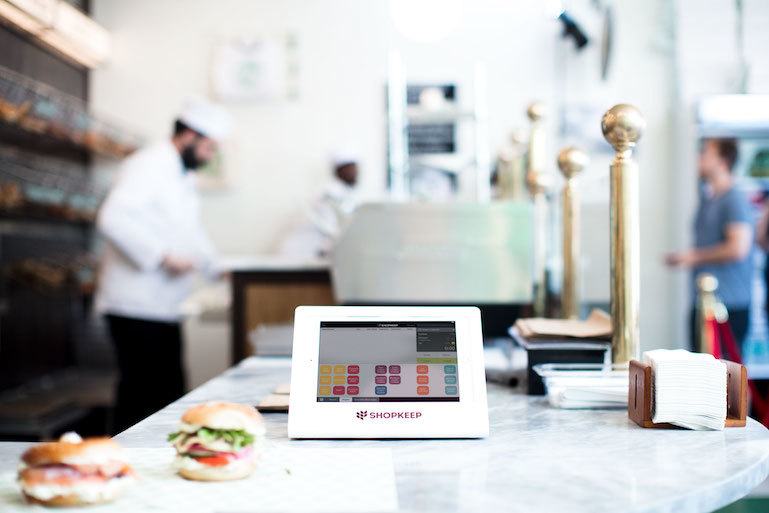
Everything You Need to Know About How to Reduce Restaurant Waste
Restaurants rake in billions of dollars a year, but with that kind of success comes piles of trash.
Restaurant waste is an unfortunate side effect of the industry and if not properly managed, it can get out of control, costing a business, time, energy, space, and money. There are a bunch of different ways restaurant waste can harm the restaurant it comes from, as well as the world around it. Understanding what restaurant waste is, and what causes it, is an essential step in finding ways to avoid or reduce it.
What Is Restaurant Waste?
Restaurant waste is the waste that’s thrown out by either the restaurant or the consumer. This can be broken down into three categories: pre-consumer waste, post-consumer waste, and disposables. Each of these types of waste can cause their own problems for a restaurant.
Pre-Consumer Food Waste
This is food that’s wasted because of issues within the restaurant. Whenever food spoils, expires, is improperly cooked or spilled, it can no longer be sold and needs to be thrown away.
Post-Consumer Food Waste
This is waste that primarily comes from the consumer. It includes food that’s left on plates to be thrown away by restaurants and leftovers that are never finished.
Disposables
Restaurant waste isn’t all about food. Things like packaging, napkins, paper plates, and plastic utensils are also a part of the waste that both consumers and restaurants create.
SEE ALSO: How to Manage a Restaurant Business

Ways Restaurants Create Food Waste
Reducing the amount of waste a restaurant creates can save the business money, time, and resources. Up to 10 percent of food in a restaurant is thrown away before it even reaches a table and that translates to a loss of more than 25 billion dollars annually. Here are some common ways restaurants create waste:
Overproducing Food
The money lost in a restaurant because of waste primarily starts by overproducing food. In the short-term, overproducing food for menu items may seem like a good idea so that there are always dishes available for consumers. However, if this food doesn’t sell, the only option your restaurant staff has is to throw it out. To combat this, a restaurant should monitor its food costs. Restaurants typically spend about 25 to 35 percent of their overall operating cost on food. Any more than that could be a sign that a restaurant is overproducing.
Trimming
Trimming is the process a chef uses when preparing food like meats and produce to get rid of inedible portions of the food. For example, trimming the fat or gristle off of a piece of chicken. Trimming food too much could mean that edible parts of the food are thrown away along with the inedible parts. This leads to more food waste. To avoid this, make sure staff is properly trained on how to prepare different kinds of food.
Excessive Food Displays
Putting out food displays can also be a source of food waste if you’re not careful. Displays are great ways to bring in customers and get people excited to eat your food, but it’s important to put the right amount of food on display. If you have leftover food from the night before, for example, put it to good use by using it in your display the next day.
Incorrect Portion Sizing
Putting too much food on a customer’s plate can mean that the customer won’t finish all of their food in one sitting. Just because a customer takes food home with them doesn’t mean it won’t go to waste. It is very likely that the food will end up in a residential trash can. This also can be linked back to food costs. If you’re spending too much on food, it can be a good idea to lower portion sizes (within reason) to save money and reduce food waste.
It’s important for restaurants to understand how their actions can cost them hundreds if not thousands of dollars a year if they aren’t careful. This lost money can be detrimental to the wellbeing of the business, but restaurants aren’t the only ones being affected by food waste. This negative environmental impact has existed for years because human actions and reducing food waste can be a huge step in the right direction.
How Food Waste Impacts the Environment
Food is the largest source of waste in the U.S. with tons of it sitting in landfills each day. According to The United States Environmental Protection Agency (EPA), 40 to 50 percent of food waste comes from consumers while 50 to 60 percent of it comes from businesses. Food that ends up in a landfill creates methane. Methane is a greenhouse gas that induces climate change by heating up the atmosphere. This also means that the water and land used to grow the food go to waste.
The loss of land means space is wasted that could be used more productively, but it also means that different animals and wildlife are displaced to make room for these crops. A prime example of this is seafood. If tons of food are wasted each year from people who don’t eat it, that means tons of fish are captured for restaurants only to be thrown away.
Oil can also be considered a big factor in environmental health because of the oil and fuel that’s needed to power food harvesting machines. These machines release gasses into the air that also contribute to global warming.
Getting back to restaurants directly, disposable items like plastic cutlery, straws, and to-go containers don’t break down naturally. When they end up in the trash they can stay there for years taking up space in dumps. Animals can also get hurt from trying to eat these items and a lot of trash finds its way into animals’ habitats.
Think about the different ways you interact with the environment on a daily basis. Throwing away food that can be saved may not seem like a big deal, but you’re also throwing away the money you spent on that food and contributing to environmental health issues. Unfortunately, the environment is not the only thing affected by food waste. A lack of resources also means that there are plenty of people without proper access to food.
SEE ALSO: 10 Ways Small Businesses Benefit the Local Community
Food Waste and Social Concerns
Millions of people go hungry each year across the world, even though the world produces 17% more food per person today than 30 years ago. Many organizations based in the U.S. are doing their part to stop food waste but as responsible business owners, it is also important to consider how you can influence positive change and improve your eco-footprint.
The EPA wants to cut the amount of food waste in half by 2030. With all the food that restaurants waste, many organizations have called on them to use that food for a greater cause. As a result, it’s now common practice for restaurants to donate unused food to shelters, giving back to their communities.

How Restaurants Can Reduce Food Waste
Getting rid of 100 percent of waste isn’t realistic. It’s best to focus on the ways to reduce the amount of waste restaurants do make as much as possible. As I stated before, monitoring food costs and properly managing food storage and preparation are important areas to start, but here are a few more options to consider:
Donate Uneaten Food
Some restaurants give their employees free food or donate food to shelters. There are even apps for that.
Speak with your Staff
Share your goals and ideals with your staff so that everyone is on the same page. Look to them for feedback and concerns about your ideas and make sure everyone is focused on the same objective. Getting their buy-in ensures that they’ll do their best to reduce waste during their day-to-day duties.
Implement Reusable Items
Start using items in your restaurant that you can sanitize and reuse. This includes things like using cloth napkins over paper ones or silverware instead of plasticware. Stop using straws altogether or give straws out only when requested. You can encourage your customers to bring their own containers for leftover food or even sell merchandise for this purpose.
Install a POS with Detailed Inventory Tracking
Installing a POS system with detailed inventory tracking gives you greater insight into where your food is going, helping you manage your food costs.
Downsize Your Menu
You can create less food waste simply by having fewer food options on the menu. The right POS system can help you see what items aren’t selling as well as others, so you can make educated choices on what items to keep on your menu. Besides, too many options on a menu can confuse customers.
Make a Food Waste Management Plan for Your Restaurant
Take the time to think about the food waste goals that you have for your restaurant and how you would like to see your restaurant improve. With a concrete idea or goal in place, it can be easier to create an action plan for what you want to accomplish.
Recycle
Restaurants can recycle by starting a recycling program if one doesn’t already exist in your area. For example, taking glass and cardboard out of your trash bins a placing them in their own bins can start the process. Then, contact your local waste management company to negotiate pickups.
Composting
Composting is a natural process where organisms like insects, fungi, and worms break down food waste. A restaurant can set up a compost bin outside or even bring your scaped food items to a composting drop-off site so everything is done for you.
A food waste management plan can benefit both you and the community by reusing the waste that’s produced daily. Implementing one in your business could even save you some money.
SEE ALSO: How to Manage a Restaurant Kitchen Effectively
The Importance of a Waste Management Plan
A waste management plan is more than just upgrading your POS. It can be a set of steps and tools used to repurpose and minimize food waste. Think of all the things that we’ve discussed so far. All of these aspects of business, social, and environmental awareness can be a part of your business if you want them to be.
Reducing waste reduces the costs of running a business. Like I said before, a POS can help lower food costs and that could mean spending less on trash pickups and maintenance. Too much waste can also be a problem. Businesses can be fined for placing their trash in unauthorized areas like public spaces (think sideways) and in alleys.
It can seem like a lot to take in, but there are so many ways that waste has a negative impact on ourselves, our community and our environment. Luckily, a few of these things can be managed through your POS to make it a smoother process. ShopKeep can manage your inventory and give you real-time data about your business, so you always know what’s going on. Being in control of your business is one of the best ways to avoid making waste.
Want to try ShopKeep for yourself?
Just answer a few easy questions.
Need help finding the right point of sale?
Just complete the form. We’ll call you right back to explain how ShopKeep can work for you.
Hit the ground running.Sprinting, in fact!
Read our free, comprehensive guide, Small Business 101, to learn all you need to know about starting a thriving business.

